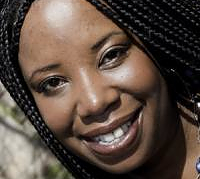
Male Mental Illness & Fights Against Patriarchies*
Manpreet Singh
*This article acknowledges the breadth of patriarchal formulations but focuses its discussion of patriarchies on cis-het perspectives alongside considerations of ethnicity & class.
** In this article ‘male’ large refers to ‘cis-male’, that is someone who was ascribed ‘male’ at birth and currently also identifies as male. In instances where this is not the case, the term ‘trans male’ will be used, as to indicate an individual who identifies with being male despite being ascribed female at birth.
A commonly cited statistic within the mental health sector is that despite comprising just under fifty percent of the United Kingdom’s population, seventy-five percent of those who die by suicide are male. In recent years, mainstream media have utilised this statistic to highlight the ‘crisis’ in male mental illness and have subsequently raised much awareness to an issue which had, previously, been overlooked.
Rather than providing another exploration into the causative factors behind the ‘crisis’ of (cis-)** male mental illness, this article forwards a consideration as to the responses which have emerged from an increased awareness of mental health problems amongst male populations. In particular, it suggests that conversations around male mental illness could and should work as an effective platform from which to encourage critical thought around the topic of patriarchies and other discriminative hierarchies within our society. However, as this article will explore, such discussion is made more difficult through the increased popularity of social revivalist movements devoid of, or opposed to, critical thought.
A ‘Crisis’ in Masculinity
Reflection and action toward critical social change, whether at an individual, structural, or institutional level, has been an important facet of society for generations. In a world where such social activism is applauded and encouraged, we may have seen the issue of male mental illness prompt provocations on social hierarchies which exist to benefit the few, not the many.
However, more recently, movements which stimulate questions over hierarchy are seen to be stigmatised under the umbrella term of ‘social justice’, a type of activism which has been negatively portrayed online and by media outlets keen to perpetuate the status quo. ‘Social justice’ is often portrayed as being ‘anti-progress’ and is seen to be conflated with topics like ‘political correctness’, a particular form of social action tied to ‘millennials’ and thought of as excessively ‘emotional’, ‘sensitive’ and ‘soft’. It is in this sociological context that we see discussions around male mental illness manifest in ways which perpetuate existing discriminations.
A loud voice in the movement against ‘social justice’ is Canadian psychology professor, Jordan Peterson, who has persistently written about the ‘attack’ on contemporary masculinity, its persistent vilification as ‘toxic’ and its subsequent impact on men who hold such identities close. Following a successful academic career, Peterson has established another stream of income through being vocally ‘anti-social justice’ and distinctly transphobic, as he notably refuses to use gender-neutral pronouns. Concerningly, Peterson has also been noted as a part of the ‘alt-Right’ online machine which we see having an increasingly disturbing impact on society.
Peterson’s persona and his videos have become incredibly popular online, especially amongst young men. His book, Twelve Rules for Life, has sold over three million copies worldwide as the professor professes ways to engage with an increasingly ‘chaotic’ world. It is here that the connection with male mental illness becomes visible. Rather than tackling the existing social hierarchies which inhibit men from ‘legitimately’ discussing mental illness, Peterson’s anti-‘social justice’ narrative actively stops men from taking considered and constructive approaches to the topic of mental health.
I have had several conversations about mental health with men, mainly young, who discuss Peterson and are seen to find deep solace in what he has to say about men needing to confront their issues head-first; one only needs to take a brief look at this Reddit thread to gather Peterson’s impact on such individuals. During these discussions, I overheard several comments denying that patriarchy and gender exacerbated mental health issues and one person even stated that men needed to come together ‘as men’ in a world which looks to strip men of their fundamental rights.
It is this type of narrative which deeply concerns me, especially since, in my view, discussions around male mental illness lead so naturally into constructive critiques of patriarchy, of capitalism, of racism, all of which are completely negated due to their existence under the negative banner of ‘social justice’.
The Patriarchal Dividend
Historically, ‘patriarchy’ has been understood as the hierarchical ‘rule of men’, who have dominant control over social, economic and political actions, decision-making processes and preference formation from which women are largely excluded. A binary understanding of gender exists to underpin patriarchy, that is the ‘male’ gender is constructed in opposition to the ‘female’, within which certain character traits are compartmentalised and embedded relative to one another, which include but are not limited to: the masculine being deemed as ‘driven by logic’, ‘strong’ and ‘active’, whilst the ‘feminine’ is deemed as ‘driven by emotion’, ‘weak’ and ‘passive’.
Within a world of multiple hierarchies, we see the conflation of patriarchies with structures such as ‘race’ and ‘class’, both of which serve to legitimise and include some, whilst deriding and excluding others. To this end, both men and some women experiences varying levels of ‘benefits’ from patriarchal structures, a phenomenon sociologist R.W. Connell terms the ‘patriarchal dividend’. A male racialised as black, for example, will benefit from patriarchy differently to a male racialised as white in situations shaped by hierarchies of both gender and race. Further to this, women racialised as white will benefit from patriarchy differently to women racialised as non-white, a key example of which can be seen in the election of Donald Trump: over fifty-percent of women racialised as white who voted did so for Trump, despite his rampant misogyny and racism towards, largely, non-white communities.
These considerations show us that patriarchies only serve to benefit the few whilst they exclude and deride the many. Our society, laden with everyday hierarchies, is therefore one which requires critical inspection, contemplation and action.
In Western societies, discussions around ‘mental health’ have been attached to notions of vulnerability, which, in turn, is considered a point of ‘weakness’ if pronounced by a man. This cognitive link between discussing mental health and ‘weakness’ exists at the core of how dominant masculinities function; remember, that masculinity is ‘strong and ruled by logic’, rather than ‘weak and driven by emotion’. This has, historically, led to the suppression of emotions deemed as ‘weak’ by generations of men who only feel as though they can express ‘legitimate’ emotions, e.g. anger. Internalisation of emotional issues and externalisation through anger (and violence) has led to hoards of men unable to communicate and resolve their difficulties which can end up manifesting as mental illnesses if left untreated.
As outlined earlier, this article does not look to expand on the causative factors behind disproportionately high male suicide but wants to outline the prevailing social structures which facilitate and enable these experiences. Hierarchies founded on patriarchy, gender, race, class, (dis-)ability and sexuality all look to regulate and police the actions of individuals in our society; immediately, from birth, we are told the ‘legitimate’ ways in which we can act due to our external appearance, ascribed behaviours and presumed biology.
Social movements which look to stifle critical inquiries into such hierarchies are therefore stopping our society from examining and implementing more inclusive and open ways of being. Regarding mental health, by critiquing patriarchy and masculinist structures, men can best understand how male dominance is in-fact detrimental to the majority of men, as well as all women and those who do not identify within a gender binary. Movements which blame ‘social justice’ and reinvigorate notions of masculinity may, in the short-term, help individuals to feel security in an increasingly uncertain world, but they ultimately reproduce the damaging power dynamics upon which our society has existed for centuries.
This does nothing to change our ways.
Moving Forwards
This article does not have answers or solutions, but merely looks to prompt reflection about how we consider topics such as male mental health. It can be easy to fall into a trap of blaming social movements which seek openness and inclusivity in favour of reinforcing existing hierarchies which look to exclude and restrict our existences.
I hope that all men reading this are able to consider a new way of approaching mental health which does not rest in perpetuating power over women, non-binary and trans folk, as well as other men themselves.
Our world is laden with unequal distributions of ‘power’ and we must, collectively, look at questioning, debasing and reimagining social configurations so as to encourage difficult conversation to ensure that those who require help can seek it with security in themselves and those around them.



